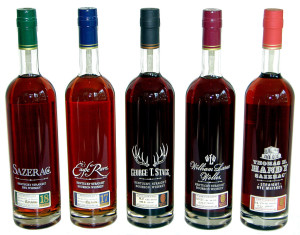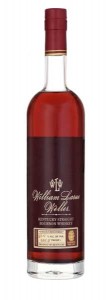Would Raising Buffalo Trace Antique Collection Prices Help Or Hurt The Average Consumer?
By Richard Thomas
The Autumnal Equinox is behind us, and for American Whiskey enthusiasts that means the dearly sought Buffalo Trace Antique Collection (BTAC) is making its way to stores and bars nationwide. This is also the time of year with bourbon forums and the comments of articles just like this one are filled with complaints as to what an unavailable chimera the BTAC whiskeys are, and how the recommended retail price for the whiskeys bear no resemblance to what is often paid for them.
Although the priciest of American Whiskeys cost only a fraction of the most exorbitant Scotch whiskies, increased demand has led to BTAC brands rising into the mid-to-high three-digit price range, while the official price set by Sazerac (owners of Buffalo Trace) have risen only slightly, most recently from $80 to $90. Some complain the gulf between the official price and what the market will bear at least partly drives the availability problem, especially in view of how similar whiskeys from Four Roses, Jim Beam and Heaven Hill are priced in the $100 to $300 range, and think that raising official prices might alleviate their concerns.
How It’s Done Now
In most American states, a legally mandated, three level system of producer, wholesaler/distributor, and retailer determines who gets what and how much they pay. The producer, in this case Sazerac, can recommend a retail price, and usually that price is more or less what the consumer pays. However, neither the wholesaler or retailer are obliged to obey that recommendation, and in the case of BTAC they often don’t.
“Distributors [can] add a 30% margin and then retailers add another 30% margin,” says Raj Sabharwal, a spirits importer.
This is to say nothing of the (often illegal) secondary market and auctions, where peak prices often occur. It might not be the routinely four-digit prices paid for Pappy Van Winkle whiskeys, but, at a few hundred to several hundred dollars a bottle, BTAC whiskeys are nothing to take lightly.
That said, some fortunate enthusiasts will get to pay the low, official price of $90 a bottle. Although waiting lists are now unrealistic and a thing of the past, some retailers and states with liquor control regimes operate lotteries to determine who gets their allotment of precious BTAC whiskey. Others are lucky enough to have established a good relationship with their retailer, and with that connection have occasional (maybe even regular) access to BTAC whiskeys at or near the official price.
Turning To Market Forces
Although enthusiasts complain that other major limited edition whiskeys—such as Parker’s Heritage, Elijah Craig 23 Year Old or this year’s Booker’s Rye—aren’t easy to acquire, they generally do not seem as difficult to find as BTAC. In some cases this is due to the larger size of the release, and some of those peer whiskeys aren’t as hunted for as BTAC, but price also plays a role.
One of the basic dictums of economics is that in an imbalance between supply and demand, if prices are allowed to rise freely they will eventually right that imbalance. In the case of whiskey, raising prices forces those unwilling to pay out of the market, thereby reducing demand and presenting those who are willing to pay with easier circumstances. This outcome would help a minority of enthusiasts with deeper pockets, while changing the reason the majority cannot purchase a BTAC whiskey from “I can’t find it” to “I can’t afford it.”
However, a dramatic price hike might also set off a price gouging spiral. “If Buffalo Trace raised their [recommended prices],” said Sabharwal, “retailers would take that as a signal that they could charge even more.” So long as there are people willing to pay, the price could keep climbing. This is more or less what has happened with Pappy Van Winkle.
What Price To Set?
When asked about their pricing policy, a Sazerac spokesperson said, “Many whiskey drinkers have enjoyed our products for years. We certainly don’t want to gouge them now, just because demand for these whiskeys has skyrocketed. We can’t control how much stores charge, but hope they treat their customer fairly.”
Keeping that in mind, whether the current system really works depends on how much you are willing to pay. If you can afford to pay $300 a bottle, then it might be better for you if prices rose to that level, because it would help ensure you get to buy that bottle more often. If you can’t afford to pay such prices, then the current system is what you want, because you might just get lucky enough to pay a (relatively) reasonable $90 a bottle.
 The Whiskey Reviewer A World of Whiskey, Poured Every Weekday
The Whiskey Reviewer A World of Whiskey, Poured Every Weekday



I’d be perfectly fine with more money going to the producer of a winning product, instead of some scalper whose only virtue was that he had nothing better to do than wait around for the delivery truck.
Or, they can start offering 10cl bottles for, say, $50, and raise the price of the full bottle to $300.
I’ve had the opportunity to try a number of these harder to find offerings, and, having done so, I’m more confident than ever that buying without first trying is very like gambling. There’s nothing like spending a small fortune on a bottle only to find out that it’s really not to your taste.
So, putting out the smaller bottles would, hopefully, enable those who really want to actually taste these to do so while still providing a market for both people who KNOW they like it and (ech!) “collectors”.